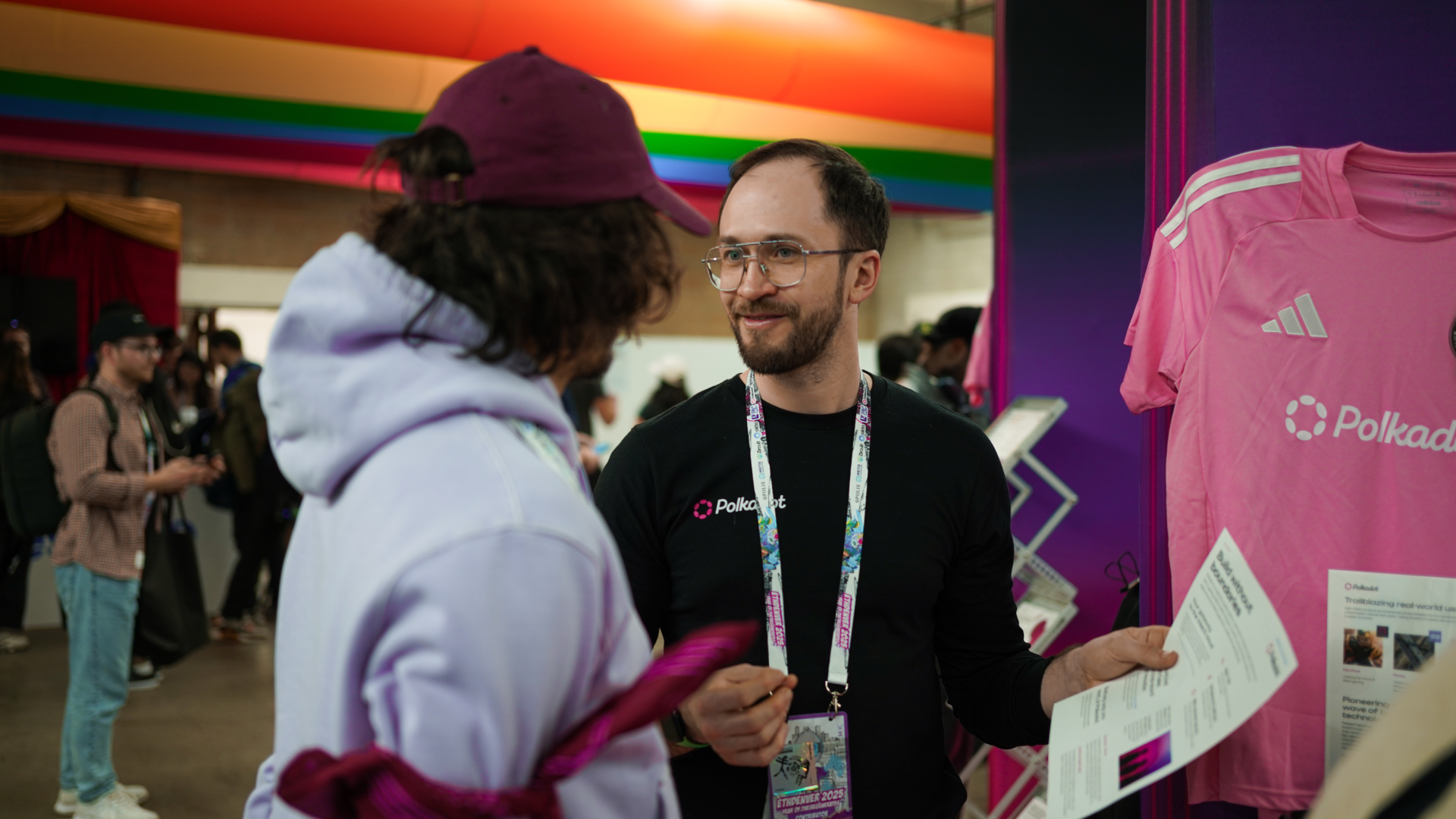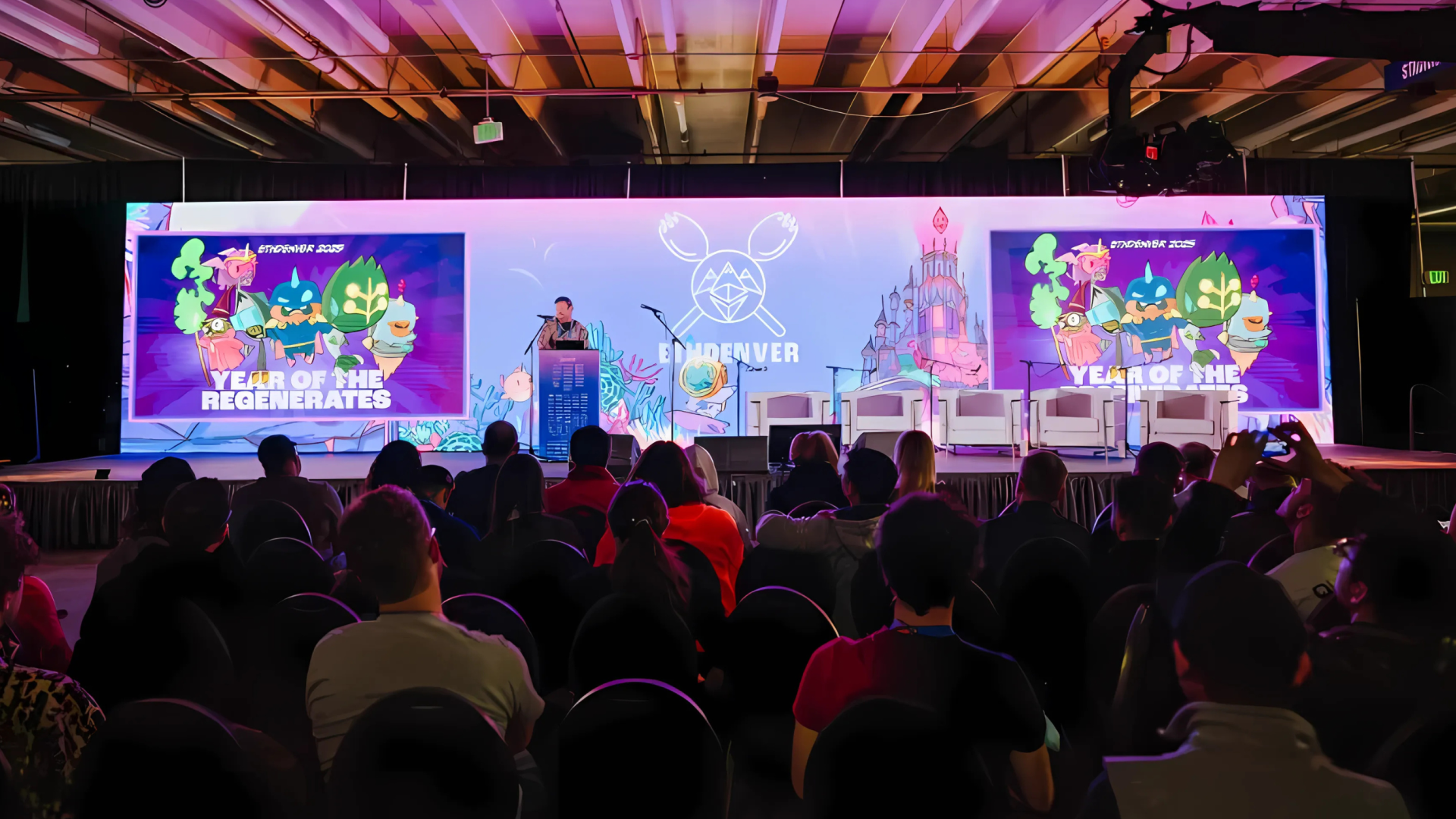Obtaining a Parachain Slot on Polkadot
Parachains are specialized shards of Polkadot that give projects and their communities agency over their respective goals.
 By Polkadot•October 6, 2020
By Polkadot•October 6, 2020
Polkadot is a blockchain network that scales by spreading transactions across multiple parallel blockchain shards called parachains. Parachains are specialized shards of Polkadot that give projects and their communities agency over their respective goals. Seven teams have added a parachain to the Rococo testnet since its launch last month, with several others in the Polkadot ecosystem moving quickly toward the same milestone.
Parachain slots are limited, and will be auctioned off in unpermissioned candle auctions. Rather than auction many parachain slots together, it's more likely (though not yet confirmed) that they will be auctioned off one-by-one, so that there’s only a single parachain auction occuring at any given time.
Parachain bond and cost
Since this process means that the cost of leasing a parachain slot will purely be a function of market supply and demand, it’s difficult to give any meaningful estimate as to what the bond requirement will be. However, we can begin to get a picture with the following assessment of DOT availability.
Polkadot tries to encourage an ideal rate of staking at 50% of all DOT. Assuming there are 100 parachains slots available (likely the maximum amount in the medium term), this means that only the other 50% of DOT are available for parachain bonding. Of course, this assumes that the ideal rate of staking is realized, that people will only use DOT for staking or parachain bonding, and that all parachain slots will cost the same.
It's important to realize that the actual cost of a parachain slot is not the same as the size of the parachain bond, since the bond is returned at the end of the lease period. The actual parachain cost is more accurately characterized as the opportunity cost from not staking those DOT.
Number of parachain slots available
The current goal is for Polkadot to support up to 100 parachains. Parachain support will likely be added before the end of the year, and already multiple teams have deployed parachains on the Rococo testnet. However, it will take some time before Polkadot mainnet fully supports 100 parachain slots. Slots are likely to be added to the system slowly over the next couple of years until this target number is reached.
How can I raise money for my bond?
Most projects that want to launch a parachain are startups that may not be able to afford the bond required for a parachain lease. Furthermore, many DOT holders may want different utility options than staking can provide. Thus, it's natural that DOT holders would want to loan their DOT to projects who require DOT for a bond in exchange for some consideration.
If a project decides that they would like to bid for an upcoming parachain slot but believes they do not have the required capital for this, then they can create a Parachain Loan Offering using the Substrate crowdfunding module to accept DOT loans from any DOT holder. Funds secured through this module would go into an account on the Polkadot Relay Chain. If the project is able to secure enough contributions to win the auction, then the DOT loans will be returned to the contributor at the end of the parachain lease period. If the project is unable to secure enough contributions and the auction is lost, then the DOT will be returned to contributors immediately. DOT in this account can only be used for parachain bonding and the projects are not able to transfer DOT out of this account. Since this module is on the Polkadot Relay Chain, contributors can trust that their contribution is safe and they will eventually receive it back (either at the conclusion of the lease or if the auction is lost).
Due to the above characteristics, crowdfunding contributors are essentially making a secured debt investment into a parachain. It's expected that projects will reward contributors in some way should they win the parachain slot in the auction, such as rewarding them with native parachain tokens. Though reward provisions are not enforced by the crowdfunding module, it's likely that many projects will want to point to some transparent on-chain logic for how these rewards are provided.
If we think of the return from staking (10-20%) as the risk-free rate of return of DOT, then this allows projects a baseline for thinking about how to reward DOT crowdsale contributors. The characterization as the return from staking being equivalent to the risk-free rate is not quite true, since staking comes with slashing risk even though the protocol guarantees a certain return. When considering the return earned via a crowdsale, the opposite is true. While the protocol guarantees the return of one’s principal, it does not guarantee that the project will compensate them with additional return on top of this.
Parachains choosing to implement a native token may choose to reward crowdsale contributors using their native token. In this case, crowdsale contributors would likely expect a return in excess of the staking rate of return to compensate for the (presumed) higher price risk of a new native token. Projects need not reward participation via a native token but have the freedom to select whatever method makes the most sense for them. Some alternative scenarios:
- Rewards could be issued in stablecoins. In this case it's likely that a return less than the staking rate of return could be provided since there is little price risk on the return stream, and the principal is completely secure and not subject to slashing.
- Rewards could be issued in DOT. In this case it's likely that a return less than the staking rate of return but greater than the return in stablecoins could be provided, since there is price risk on the return stream but the principal is completely secure and not subject to slashing.
Ultimately, different types of contributors will have different preferences, and projects may even consider providing a choice of different return options.
What if I don't win a future parachain auction?
Parachain slots can only be acquired for a finite period of two years or less. At the conclusion of the lease, the slot will go back up for auction. Projects that fail to win this subsequent parachain slot auction have four primary options to consider:
- Convert their Substrate-based chain to a parathread. Though this will not give them the same guarantees of throughput as a parachain, they can still utilize Polkadot's shared security and interoperability, but in a pay-as-you-go model.
- Deploy the parachain to Kusama. This will require some planning since there will need to be a parachain slot available on Kusama as well. However, parachain bond requirements are likely to be lower on Kusama than they are on Polkadot.
- Deploy their application or service on an existing parachain via smart contracts in Solidity or ink!. This has a higher development cost, but is an option for projects who want to utilize the parachains that support these methods.
- Run their Substrate-based chain as a solo-chain and connect to Polkadot via a bridge. This requires gathering security resources as validators on the bridge and chain itself.
The first two options above would not require significant changes to a Substrate-based chain. For (1), parathreads and parachains use an identical API, so no changes would be required. For (2), since Kusama and Polkadot use very similar codebases only minimal changes (if any) would likely be required.
It's important to note that an incumbent parachain will not lose their slot immediately as the result of them losing the auction for their slot. There will be a period of time after the conclusion of the auction and when the slot is transferred to the new holder that will likely be on the order of months.
Parachain sustainability models
For many projects, it may be undesirable to have to continuously attempt to secure crowdfunding for parachain slots. Theoretically, the size of the required bond is expected to grow over time at a rate close to the rate of inflation (i.e. approximately 10% with current parameters). To ensure sustainability, it makes sense for most projects to at least partially focus on developing their own DOT reserves so they can afford at least a portion of the required bond.
One method for doing this is through the idea of a decentralized Sovereign Wealth Fund (dSWF). First promulgated by Acala, this is an on-chain fund which would focus on acquiring enough DOT to eventually allow the project to secure their own parachain slot without resorting to significant crowdfunding that could pose major business risk. Explained in detail in Acala’s blog post, a portion of transaction fees from a project could be allocated to a dSWF, which would initially use these fees to acquire DOT, stake them between parachain slot auctions and unstake them when it's time for the project to bid on a new slot. As the user base of the project grows, so do the transaction fees earned by the dSWF, which allow them to acquire more and more DOT, allowing the project to fund a higher portion of their own parachain slot over time.
Projects that have their own token may want to inflate their token via the staking pallet and add a portion of this inflation (likely the vast majority of it) to the dSWF. These tokens can then be used by the dSWF to acquire DOT via a DEX or other method.
Collator incentivization
Collators maintain parachains by collecting transactions and producing state transition proofs for validators. It's best practice for chains to have multiple collators in order to ensure availability of blocks and state transition proofs to validators. However, collators can only affect the availability of blocks and can't compromise safety. You only need one honest collator to ensure availability. This makes their roles far less important and sensitive than the roles of validators. Though having a distributed set of collators is important, this is far less important than having a distributed set of validators.
Many projects ask for best practices around incentivizing collators and we present some options below:
- Incentivize collators through transaction fees specific to your chain. You may want to bootstrap this by reserving a fixed portion of your native token or other types of rewards for early incentivization, so that it makes sense to run a collator before your chain has significant transactions.
- If applicable, inflate your native token via the staking pallet and use rewards to incentivize collators. This is probably the easiest way to build a decentralized set of collators. However, this is likely too much incentivization given their role. If this method is used, a very low level of inflationary rewards will likely suffice.
Many projects will choose to run a portion of collator nodes themselves. This is the best-practice to ensure availability.
Implications for token models
The above considerations have the following implications for parachain economic models that involve a native token:
- There is generally no need to significantly inflate the native token in order to provide rewards to collators.
- Token models should have some mechanism that allows projects to increase the level of their DOT reserves, so that they move towards being able to sustainably fund their parachain slot lease, and reduce the level of external DOT funding required over time. One potential way to accomplish this is by using the dSWF model described above, either with or without the use of token inflation to acquire additional DOT.
Parachain development path
To most effectively build on Polkadot, we recommend projects take the following development path:
- Parachain deployment to Rococo, the parachain testnet for Polkadot and Kusama. This will allow the project to verify the soundness of their technology before deploying on a platform with real economic consequences.
- After the technology is sufficiently developed, the parachain should be deployed to Kusama. Kusama is designed for fast-paced innovation and places the latest tech from Parity Technologies and Web3 Foundation in the hands of developers, even before those features make it to Polkadot. Crucially, Kusama will have lower barriers of entry for developers since the parachain bonding requirement is likely to be lower than on Polkadot. This makes it an ideal environment for teams to fine-tune their product and business model amongst a community of actual users before considering a Polkadot deployment.
- After fine-tuning on Kusama, projects that require bank-like security and robustness may consider a Polkadot deployment. In case of a Polkadot deployment, many teams may choose to retain their Kusama deployment in order to test new features before deploying them on their Polkadot parachain.
More details on the relationship between Kusama and Polkadot can be found in this article.











